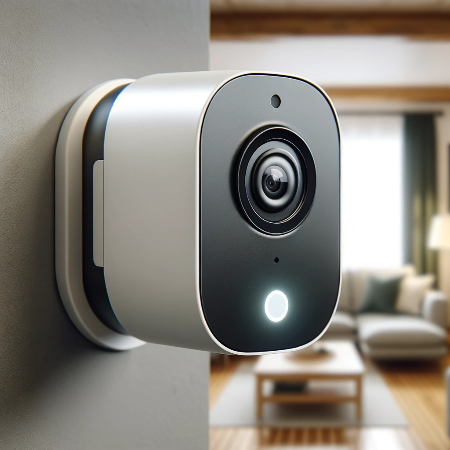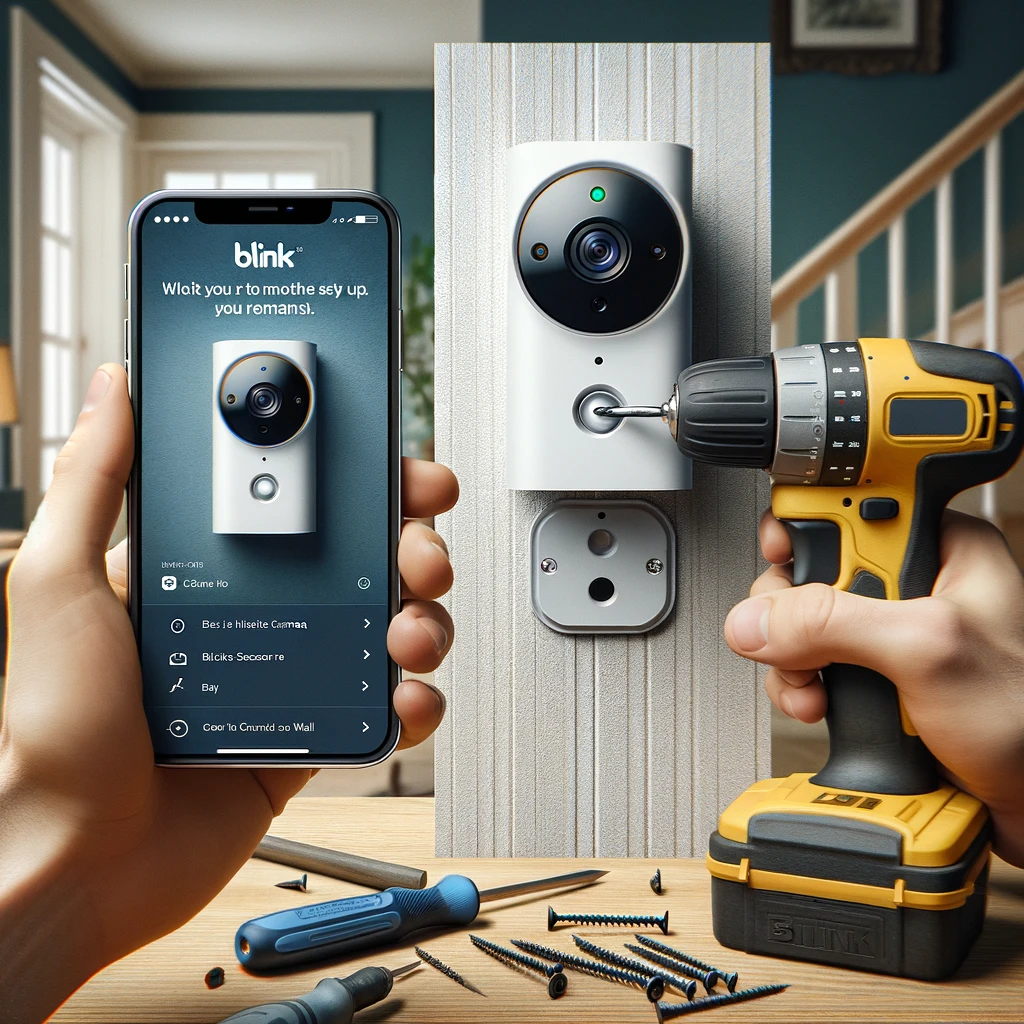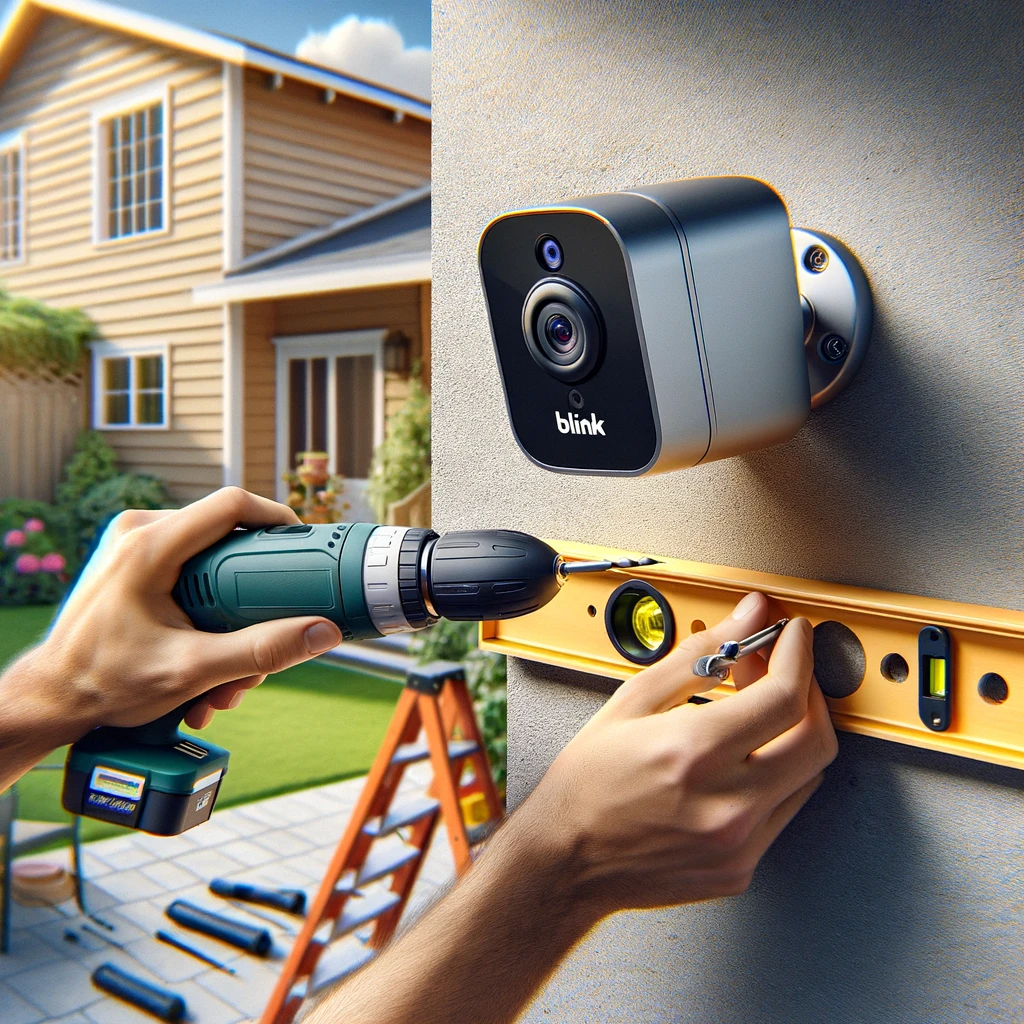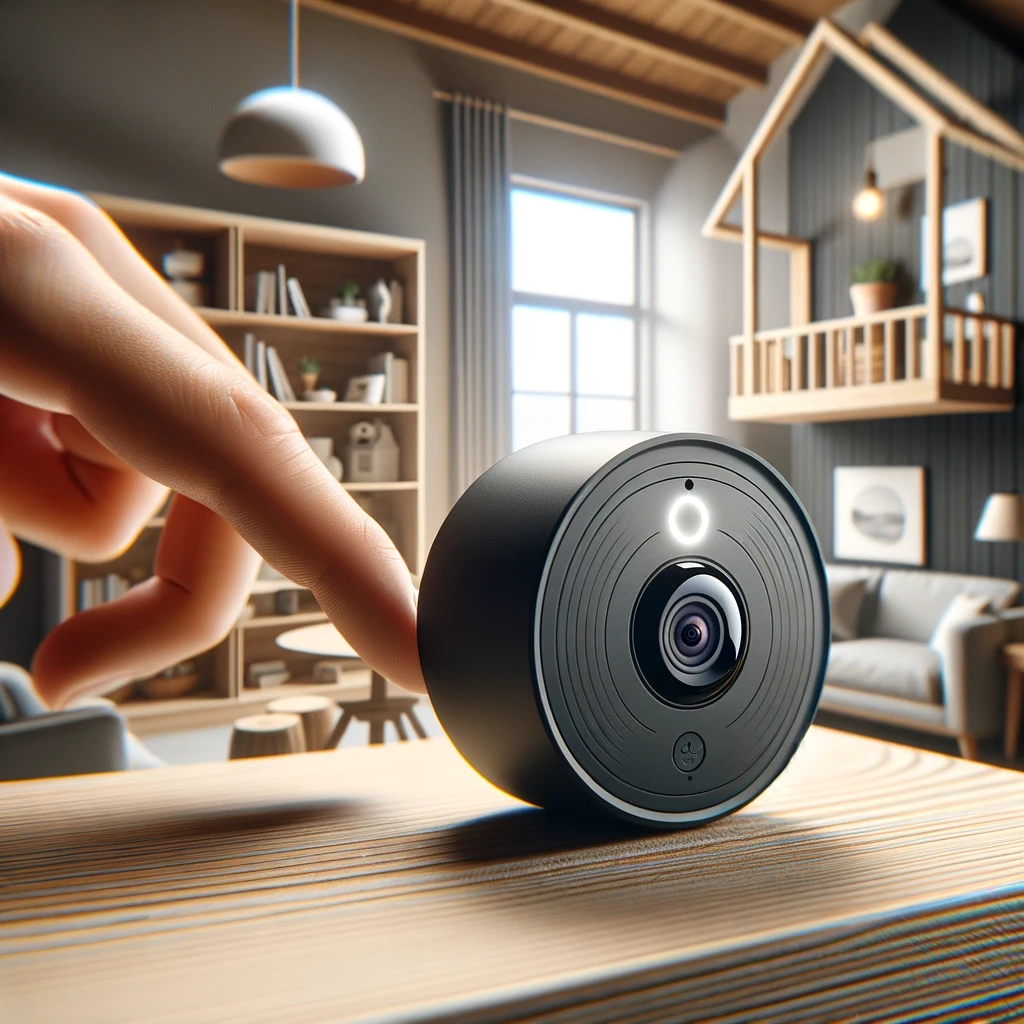Blink Camera Setup
Welcome to the Ultimate Guide for Blink camera setup! Discover the simplicity and importance of Blink camera setup for optimal home security. Whether you’re a tech-savvy individual or new to home security systems, our comprehensive guide will walk you through every step of the Blink camera setup process. From unboxing your new Blink cameras to configuring them for daily use, we ensure that your journey towards a safer home is smooth and hassle-free. Embrace the peace of mind that comes with expertly setting up Blinkforhome security system – because protecting your home should be easy and reliable. Stay tuned as we dive into the process of Blink camera setup, offering you detailed insights and tips to get the most out of your Blink security cameras.
Blink Camera Setup Guide:
Welcome to the comprehensive Blink Camera Setup Guide. Getting your Blink camera up and running is a straightforward process, and we’re here to guide you through every step.
-
Unboxing Your Blink Camera:
Begin your Blink camera setup by carefully unboxing the camera. Inside, you’ll find everything needed to install your Blink camera. Take a moment to familiarize yourself with the components, ensuring you have all the necessary items for a successful installation.
-
Installing the Blink Camera App:
The next step in your Blink camera setup is to download and install the Blink app on your smartphone. This app is integral to the Blink camera install process, as it will guide you through the rest of the setup and be your control center for the camera.
-
Creating an Account:
After installing the app, create an account or log in if you already have one. This step is crucial for a seamless Blink camera setup.
-
Adding Your Camera:
To install Blink camera, tap on the ‘Add Device’ option in the app. Follow the in-app instructions, which will include scanning the bar code on your camera, to add your Blink camera to your account.

-
Physical Installation:
Now, it’s time to physically install Blink camera. Choose an optimal location for your camera, keeping in mind factors like lighting, field of view, and height. Securely mount the camera, ensuring it has a clear view of the area you wish to monitor.
-
Configuring Camera Settings:
Once the physical Blink camera installation is complete, return to the app to configure your camera settings. This includes adjusting motion detection sensitivity, recording length, and setting up activity zones.
-
Testing Your Setup:
Finally, test your Blink camera setup by triggering a few test recordings. Make sure you receive notifications on your phone & that the video quality meets your expectations.
And just like that, your Blink camera setup is complete! Enjoy the peace of mind that comes with a well-installed Blink camera, keeping an eye on your home whenever and wherever you need it.
Blink Outdoor Camera Setup:
Mastering your Blink Outdoor Camera Setup is key to enhancing the security of your outdoor spaces. This guide is dedicated to helping you seamlessly install Blink camera, ensuring you get the best coverage for your backyard, front porch, or any outdoor area.
-
Choosing the Perfect Location:
The first step in your Blink outdoor camera setup involves selecting the ideal location. Consider high vantage points that overlook your backyard or entrance, ensuring maximum coverage. When you set up Blink outdoor camera, make sure it’s placed out of easy reach to prevent tampering and has a clear view, free from obstructions like trees or decor.

-
Mounting Your Camera:
Properly mounting your camera is a crucial aspect of the Blink outdoor camera installation process. Use the mounting bracket provided to secure your camera. Ensure it’s angled correctly to cover the desired area – a key step when you’re installing a Blink camera in your backyard. The goal is to have a wide, unobstructed view while protecting the camera from extreme weather conditions.
-
Weatherproofing:
Since this is an outdoor installation, weatherproofing is an essential consideration for your Blink outdoor camera setup. Although Blink cameras are designed to withstand the elements, it’s wise to position them under eaves or similar shelter when possible. This extra step in your Blink outdoor camera installation process not only extends the life of your camera but also ensures consistent performance regardless of weather conditions.
-
Configuring Settings for Outdoor Use:
After mounting, the next step in your Blink outdoor camera setup is to adjust the settings via the Blink app. This includes tweaking motion detection sensitivity – particularly important in outdoor environments where movement is more frequent. Customize settings such as activity zones and alert types to suit the specific needs of your outdoor area.
-
Testing and Adjustments:
Once you’ve completed your Blink outdoor camera installation, test the camera’s field of view and motion detection. You might need to make some adjustments after you initially set up Blink outdoor camera to ensure optimal coverage and functionality. Check the live view and trigger a few test recordings to confirm everything is working as expected.
-
Finalizing Your Setup:
With everything in place, your Blink outdoor camera setup is now complete. Enjoy the enhanced security & peace of mind that comes from knowing your outdoor spaces are well-monitored. Remember, regular maintenance and occasional adjustments are part of keeping your Blink outdoor camera installation in top condition, ensuring reliable surveillance of your backyard and beyond.
By following these detailed steps for your Blink outdoor camera setup, you’ll ensure your outdoor spaces are effectively monitored with optimal positioning and weatherproofing, providing you with security and peace of mind.
Blink Mini Step:
Embark on your journey with the Blink Mini Setup, a task simpler than you might expect, yet crucial for optimal performance. This segment is your complete guide to Blink Mini camera setup, designed to assist you in every step, ensuring your Blink Mini camera is up and running effectively.
-
Unboxing and Understanding Your Blink Mini:
Start your Blink mini camera setup by unboxing and identifying all the components. Familiarize yourself with the camera, its power adapter, and any accompanying accessories. This initial step is fundamental to a successful set up of Blink Mini.

-
Choosing the Ideal Location:
The key to a successful Blink Mini setup is selecting the perfect spot. Ideal placement for your Blink Mini includes areas where it can capture a broad view of the room. Consider elevating the camera for a wider field of vision, an important aspect of Blink Mini camera setup.
-
Powering and Connecting:
Plug in your Blink Mini using the provided USB cable & power adapter. Once powered, the camera will enter the setup mode, indicated by a blinking light. This is a crucial phase in the Blink Mini setup process.
-
Syncing with the Blink App:
Open the Blink app on your smartphone, which plays a pivotal role in your Blink mini camera setup. Follow the in-app instructions to add your Blink Mini to your Blink account. This step in the set up Blink Mini process involves connecting camera to your Wi-Fi network, ensuring it can transmit live feeds and alerts.
-
Adjusting the Camera Settings:
Once connected, adjust your Blink Mini’s settings. This includes configuring motion detection, recording length, and determining the camera’s activity zones. These settings are integral to customizing your Blink Mini setup to suit your specific needs.
-
Testing Your Blink Mini Camera:
After completing your Blink Mini camera setup, it’s time to test. Check the live view to ensure the camera captures the desired area. Test the motion detection and the recording features to confirm that your Blink Mini setup meets your expectations.
-
Securing and Privacy:
Lastly, position your Blink Mini in a way that maximizes security while respecting privacy. Consider the field of view and potential privacy concerns, a thoughtful aspect of your Blink Mini camera setup.
With these steps, your Blink Mini setup is complete. You have successfully navigated through the process of setting up Blink Mini, ensuring it is perfectly tuned to monitor your home. Whether it’s for keeping an eye on pets or adding a layer of security, your Blink Mini is now an integral part of your home’s safety ecosystem.
Troubleshooting Blink Camera Setup Issues:
Encountering issues during your Blink camera WiFi setup can be frustrating. This section addresses common troubleshooting scenarios, helping you seamlessly connect your Blink camera to your Wi-Fi network and resolve other frequent challenges.
-
Ensuring Wi-Fi Connectivity:
The most critical aspect of the Blink camera WiFi setup is ensuring your Wi-Fi network is operational and stable. Confirm that your router is online and broadcasting. If your Blink camera is not connecting, try rebooting your router and camera to refresh the connection.
-
Optimizing Wi-Fi Signal Strength:
Weak Wi-Fi signals can impede your Blink camera WiFi setup. Ensure your camera is within a reliable range of your router. Avoid physical obstructions like walls or large metal objects that can interfere with the signal.
-
Updating Camera Firmware:
Occasionally, firmware issues can disrupt the Blink camera WiFi setup. Check if your Blink camera has any pending firmware updates in the app. Keeping your camera’s software up-to-date is crucial for a smooth connection to your Wi-Fi network.
-
Resetting the Blink Camera:
If you’re still facing issues in connecting your Blink camera to a Wi-Fi network, try resetting the camera. A reset can often resolve connectivity problems, but ensure you follow the manufacturer’s instructions to avoid any missteps.
-
Checking Wi-Fi Network Compatibility:
Ensure your Wi-Fi network is compatible with your Blink camera. Most Blink cameras require a 2.4GHz Wi-Fi network, which is essential to note during your Blink camera WiFi setup.
-
Using the Right Password:
A common mistake during the Blink camera WiFi setup is entering an incorrect Wi-Fi password. Double-check your network’s password for accuracy, remembering that it is case-sensitive.
Q: What should I do if my Blink camera keeps disconnecting from Wi-Fi?
- A: Check your Wi-Fi strength and router settings. Interference from other devices can also cause disconnections.
Q: How can I extend the Wi-Fi range for my Blink camera?
- A: Consider using a Wi-Fi extender or placing the router closer to your Blink camera for a stronger signal.
Q: Can I connect my Blink camera to a 5GHz network?
- A: Most Blink cameras are designed for 2.4GHz networks. Check your camera’s specifications for network compatibility.
By following these tips and troubleshooting steps for your Blink camera WiFi setup, you can effectively resolve common connectivity issues. Remember, proper Wi-Fi setup and maintenance are key to ensuring your Blink camera functions optimally, providing you with reliable home security monitoring.
Conclusion:
As we conclude our comprehensive guide, it’s clear that the proper setup of your Blink camera system is paramount to ensuring the safety and security of your home. Whether you’re installing a robust outdoor setup or a compact Blink Mini, each step in the setup process is crucial to maximize the effectiveness of your security system.
Remember, the journey doesn’t end with the installation. Regular maintenance, updates, and revisiting your camera settings are key to keeping your Blink system functioning at its best. Stay vigilant about new features and updates that Blink might offer, ensuring your system remains cutting-edge.
To know more about Blink camera and resolve its issues, you can visit Blink Support page.

